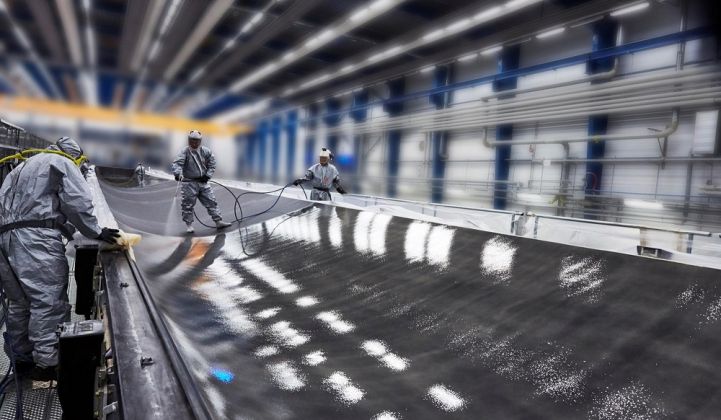Swedish utility Vattenfall announced plans to deploy GE Renewable Energy’s 12-megawatt Haliade-X offshore wind turbine at future projects in Europe — a big win for the world’s largest wind turbine, and for GE’s otherwise lagging offshore wind business.
First announced last year and due to begin commercial deliveries in 2021, the Haliade-X will be capable of generating enough power from a single turbine to supply 16,000 European households, or an estimated 67 gigawatt-hours per year if sited in typical conditions in the German North Sea, GE said.
Haliade-X’s estimated capacity factor in such conditions will be above 60 percent, remarkably high for a variable energy source like wind.
Vattenfall did not specify where it intends to deploy the Haliade-X, but said it spent the past year in “intensive exchanges” with GE, conducting in-depth technical due diligence.
Vattenfall’s announcement will be seen as a key vote of confidence for the Haliade-X and could pave the way for future deals. Owned by the Swedish government, Vattenfall is among Europe's largest utilities, and the third-largest owner of offshore wind capacity in a market that now has 18.5 gigawatts in operation.
Vattenfall says it will finalize the details of its cooperation with GE this summer, and they will begin looking at specific projects for Haliade-X within Vattenfall’s pipeline later this year.
Among the projects on its horizon, Vattenfall is bidding for a 750-megawatt offshore development zone facing France. GE Renewable Energy is based in Paris, and produces its offshore wind components along the French coast — a legacy of GE's 2015 acquisition of Alstom.
“Vattenfall wants to achieve fossil-free living within one generation,” Gunnar Groebler, head of Vattenfall’s wind business, said in a statement. “By doing that it is also our role to use our capabilities to contribute to the development and reinforcement of the supply chain in Europe, and in this particular case in France.”
GE is currently putting up its first prototype of the Haliade-X in the Port of Rotterdam, expected to begin producing electricity later this year.
GE is among the world’s most important makers of onshore wind turbines, and the leading supplier to the U.S. market. But the company has struggled to make much of a dent in the faster-growing offshore market, with a 3 percent share of the global market last year, according to Wood Mackenzie Power & Renewables.
Larger offshore rivals Siemens Gamesa Renewable Energy and MHI Vestas controlled nearly 60 percent of the market between them.
Last month GE walked away from 1 gigawatt of potential offshore orders in France after lengthy delays made the projects uneconomic, ceding the order instead to Siemens Gamesa.
GE grabbed an early lead in the U.S. offshore market, supplying five of its original 6-megawatt Haliade turbines to the Block Island Wind Farm off Rhode Island, the only U.S. project in operation today. But it has since failed to secure any more U.S. orders, even as MHI Vestas was named the preferred supplier for developer Vineyard Wind’s 800-megawatt project off Massachusetts.
Vineyard's project will use 9.5-megawatt turbines transported from Europe.
Recognizing the size disadvantage of its original Haliade in the current market, GE last year unveiled the 12-megawatt Haliade-X model, turbocharging the race into double digits among offshore turbine suppliers.
Haliade-X will use 107-meter blades, the longest ever manufactured. By comparison, the original 6-megawatt Haliade turbines installed at Block Island use 73.5-meter blades.




